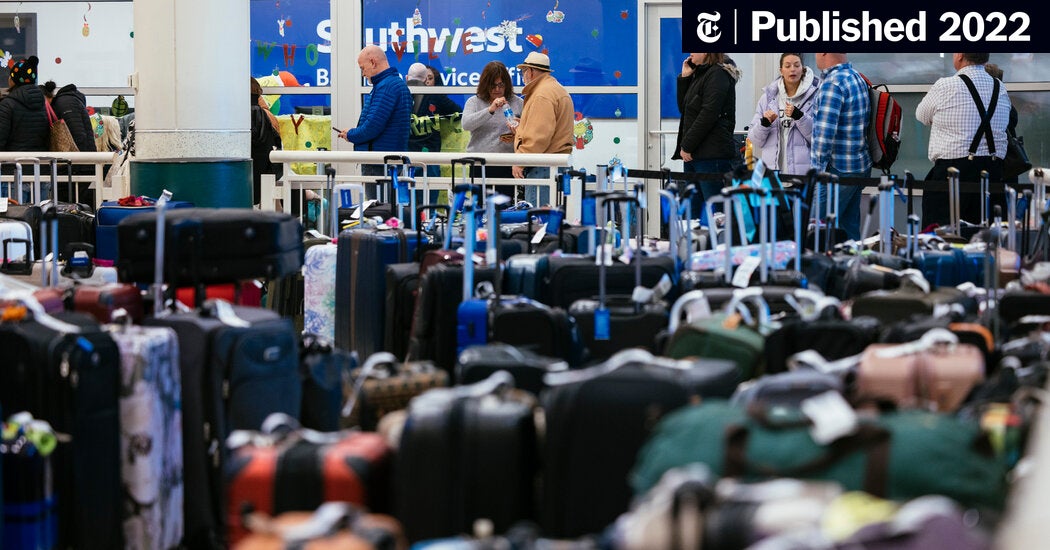The University Budget Crunch: Pay Cuts, Layoffs, And The Future Of Higher Education

Table of Contents
The Causes of the University Budget Crunch
The current university budget crunch is a complex issue stemming from a confluence of factors, each contributing to the precarious financial state of many institutions.
Decreased State Funding
Public universities have historically relied heavily on state and local government funding. However, this funding has drastically declined in recent years. For example, California's public universities have seen a significant reduction in state support over the past decade, forcing them to make difficult choices regarding budgets.
- Decreased tax revenue: Economic downturns and shifts in tax policies have reduced the overall tax revenue available for state governments to allocate to education.
- Shifting political priorities: Competing demands for public funds, such as healthcare and infrastructure, often leave higher education with reduced budgetary allocations.
- Increased demand for other public services: Growing needs in areas like social welfare and public safety often lead to a reallocation of funds away from higher education.
Data from the National Center for Education Statistics shows a consistent downward trend in state funding for public colleges and universities since 2008, impacting everything from faculty salaries to infrastructure maintenance.
Rising Operational Costs
Beyond declining government support, universities face the challenge of escalating operational costs. Inflation, coupled with increased demands, is squeezing budgets significantly.
- Inflation: The rising cost of goods and services impacts every aspect of university operations, from utilities to office supplies.
- Increased healthcare costs for employees: The cost of providing health insurance benefits to faculty and staff continues to rise, placing a significant strain on university budgets.
- Technological advancements requiring expensive upgrades: Maintaining state-of-the-art technology, including computer labs, software licenses, and online learning platforms, represents a substantial ongoing expense.
The cost of running a modern university has increased dramatically in recent years, outpacing the growth of available funds. Some estimates suggest that operational costs have risen by 30% or more in the past decade, exceeding the rate of inflation.
Declining Enrollment
A decrease in student enrollment, particularly in certain fields, contributes to the university budget crunch. Lower enrollment directly translates into reduced tuition revenue, a major source of income for many institutions.
- Demographic shifts: Changes in birth rates and high school graduation rates can lead to fluctuations in the number of prospective students.
- Competition from alternative educational pathways: The rise of online learning platforms, bootcamps, and vocational training programs offers students alternative educational paths, impacting traditional university enrollment.
- Rising tuition costs: The increasing cost of higher education makes it inaccessible for many students, further impacting enrollment numbers.
Projections for future enrollment suggest that this trend may continue, placing further strain on university finances and necessitating creative solutions to maintain financial stability.
The Impact of Budget Cuts on Universities
The consequences of the university budget crunch are far-reaching, affecting all aspects of university life.
Faculty and Staff Layoffs
One of the most direct consequences of budget cuts is the reduction in workforce through layoffs. These cuts not only impact the livelihoods of employees but also diminish the quality of education and research.
- Examples of specific universities implementing layoffs: Numerous universities across the country have announced layoffs in recent years, citing budget constraints as the primary reason.
- The impact on research and teaching: Layoffs often lead to larger class sizes, increased teaching loads for remaining faculty, and a slowdown or cessation of research projects.
The loss of experienced faculty and staff is detrimental to a university’s intellectual capital and its ability to provide a high-quality educational experience.
Salary Reductions and Freezes
In addition to layoffs, many universities have resorted to salary reductions and freezes, impacting the financial stability and morale of their employees.
- Impact on employee retention and morale: Salary cuts and freezes can lead to decreased morale, increased employee turnover, and difficulty attracting and retaining qualified faculty and staff.
- Potential effects on the quality of teaching and research: Financial insecurity can negatively impact the quality of teaching and research, as faculty may be forced to take on additional work or reduce their research efforts.
- Potential for legal challenges related to pay cuts: In some cases, salary reductions have faced legal challenges based on contractual obligations or labor laws.
Program Cuts and Reduced Services
Budget cuts often result in the elimination or reduction of academic programs, student support services, and extracurricular activities.
- Examples of programs that have been cut or reduced: Many universities have reduced or eliminated less popular majors or support services such as counseling or tutoring.
- The impact on students and the overall learning environment: Program cuts can limit student choices, reduce access to vital support services, and diminish the overall campus experience.
- Potential for long-term damage to the university's reputation: The perception of reduced quality can negatively impact a university’s reputation and its ability to attract students and funding in the future.
The Future of Higher Education in the Face of Budget Constraints
Overcoming the university budget crunch requires innovative solutions and a fundamental reassessment of the higher education model.
Innovative Funding Models
Universities need to explore new and diverse funding models to lessen their reliance on traditional sources.
- Examples of successful fundraising campaigns: Some universities have successfully implemented large-scale fundraising campaigns targeting alumni and private donors.
- Explore the potential of alumni networks: Stronger engagement with alumni can lead to increased donations and support.
- Discuss the potential downsides of over-reliance on private funding: Over-reliance on private donations can create dependence on wealthy benefactors and potentially influence academic priorities.
Increased Efficiency and Cost-Cutting Measures
Improving efficiency and implementing cost-cutting measures without compromising educational quality is crucial.
- Examples of efficient cost-cutting strategies that maintain quality: Consolidating departments, streamlining administrative processes, and investing in technology to automate tasks can lead to savings without compromising education.
- Analyze the trade-offs between cost-cutting and maintaining educational quality: Careful consideration is necessary to ensure that cost-cutting measures do not negatively impact teaching, research, or student support.
Rethinking the Role of Higher Education
The traditional model of higher education needs adaptation to remain relevant and accessible in the face of financial pressures and evolving societal needs.
- Online education, micro-credentials, lifelong learning programs: Expanding access to online learning, offering micro-credentials for specific skills, and providing lifelong learning opportunities can increase access and diversify revenue streams.
- Discuss the importance of adaptability and innovation in higher education: Higher education institutions must embrace innovation and adapt to changing demands to remain sustainable and relevant in the long term.
Conclusion
The university budget crunch is a serious issue with significant consequences for higher education. Declining state funding, rising operational costs, and declining enrollment are creating a perfect storm, forcing universities to make difficult choices about layoffs, salary reductions, and program cuts. However, the future of higher education isn't solely defined by these challenges. By exploring innovative funding models, implementing efficient cost-cutting measures, and rethinking the very nature of higher education, universities can navigate these difficult times and secure a sustainable future. Understanding the university budget crunch is crucial for the future of higher education. Let's work together to find sustainable solutions and safeguard the vital role universities play in our society. Learn more about the university budget crisis and how you can help.

Featured Posts
-
 Michael Confortos Debut Home Run Secures Dodgers Win Over Mariners
May 18, 2025
Michael Confortos Debut Home Run Secures Dodgers Win Over Mariners
May 18, 2025 -
 Osama Bin Laden Documentary Delayed When Can We Expect The Netflix Release
May 18, 2025
Osama Bin Laden Documentary Delayed When Can We Expect The Netflix Release
May 18, 2025 -
 Taylor Swift Blake Lively And The It Ends With Us Controversy An Exclusive Look
May 18, 2025
Taylor Swift Blake Lively And The It Ends With Us Controversy An Exclusive Look
May 18, 2025 -
 Teslas Defensive Strategy Addressing Shareholder Litigation After Musks Compensation
May 18, 2025
Teslas Defensive Strategy Addressing Shareholder Litigation After Musks Compensation
May 18, 2025 -
 Former Red Sox Closer Explains His Free Agent Choice
May 18, 2025
Former Red Sox Closer Explains His Free Agent Choice
May 18, 2025
Latest Posts
-
 May 8th Mlb Dfs Expert Picks Sleepers And Players To Avoid
May 18, 2025
May 8th Mlb Dfs Expert Picks Sleepers And Players To Avoid
May 18, 2025 -
 Another Celebrity Joins Only Fans Amanda Bynes Latest Venture
May 18, 2025
Another Celebrity Joins Only Fans Amanda Bynes Latest Venture
May 18, 2025 -
 Southwest Washington Faces Economic Uncertainty Amidst New Tariffs
May 18, 2025
Southwest Washington Faces Economic Uncertainty Amidst New Tariffs
May 18, 2025 -
 Unlocking Value Mlb Dfs Sleeper Picks For May 8th
May 18, 2025
Unlocking Value Mlb Dfs Sleeper Picks For May 8th
May 18, 2025 -
 Amanda Bynes Only Fans What We Know So Far
May 18, 2025
Amanda Bynes Only Fans What We Know So Far
May 18, 2025
